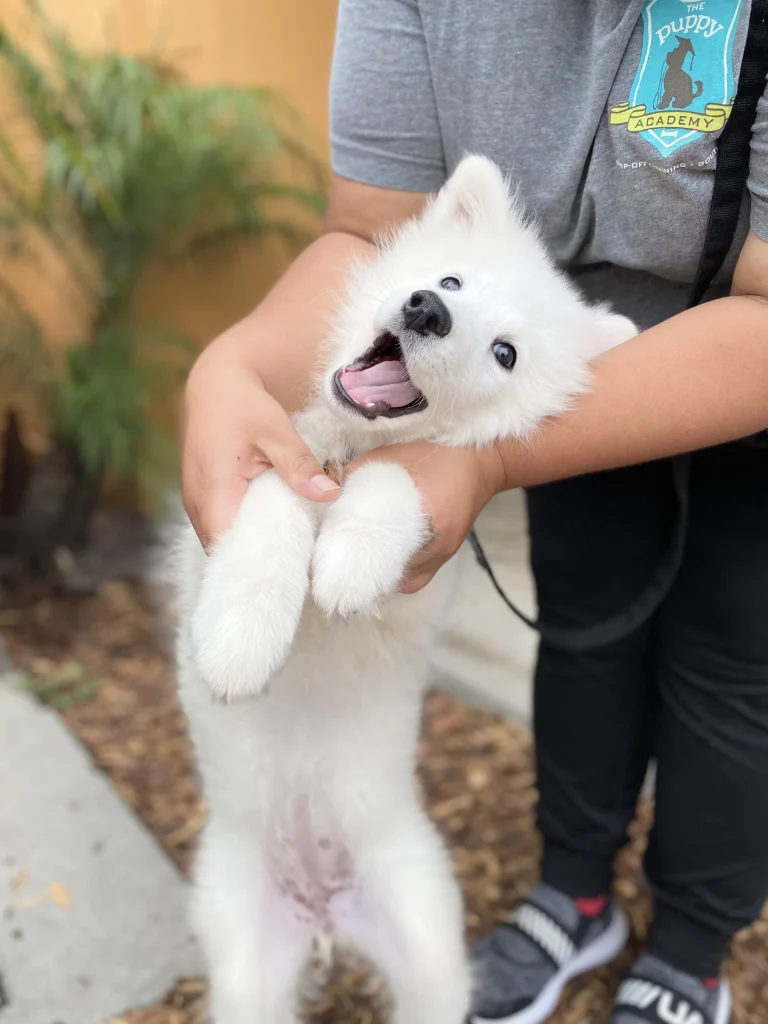Effective Strategies for Training Dogs at Home

Unlocking Your Dog’s Full Potential
Training your dog at home can seem challenging, but with the right strategies, it becomes not only effective but also enjoyable. Pet owners across the United States are discovering innovative methods that foster strong bonds while teaching essential commands. By engaging in a positive training experience, you’ll not only communicate better with your furry friend but also build a lasting relationship based on trust and mutual respect.
Key Strategies for Effective Dog Training
Below are some strategies that can transform your approach to training:
- Consistency is Key: Establish clear rules and stick to them to avoid confusing your dog. For instance, if you decide that jumping is unacceptable, ensure that no one in the household allows it, including guests. This uniformity helps your dog understand expectations and leads to faster learning.
- Positive Reinforcement: Use treats, praise, or playtime as rewards for good behavior. Dogs are motivated by rewards, so a small, training-friendly treat can make a world of difference. For example, when teaching your dog to sit, be sure to reward them immediately after they perform the command. This creates a helpful association between the command given and the action performed.
- Short Sessions: Keep training sessions brief, about 5-10 minutes, to maintain your dog’s focus and enthusiasm. Dogs tend to have short attention spans, so shorter sessions can prevent them from becoming bored or frustrated. Incorporating training moments throughout daily activities, like during walks or meal times, can also enhance their learning.
Your dog’s learning experience can be significantly enhanced by creating a structured environment. Implementing training in familiar surroundings not only eases anxiety but also promotes a sense of security, allowing them to thrive. For instance, if you have a specific place in your home where you conduct training, such as the living room or backyard, this consistency can signal to your dog that it’s time to focus and learn.
Adapting to Your Dog’s Unique Needs
As you embark on this rewarding journey, remember that each dog is unique. Tailoring your strategies to meet your pet’s individual needs can lead to remarkable progress. For example, a high-energy breed like a Border Collie may thrive on more active and engaging training sessions compared to a more relaxed breed like a Bulldog. Understanding your dog’s temperament can help shape your training approach, making it more effective and enjoyable.
Dive deeper into the world of canine training and discover additional techniques that enhance communication, obedience, and companionship with your furry friend. Exploring resources such as books, online courses, and local training classes can provide valuable insights and foster a deeper understanding of your dog’s behavior. The investment you make in training will pay off in the form of a well-behaved, joyful, and engaged companion. With patience and perseverance, you can unlock your dog’s full potential, leading to countless adventures together.

DISCOVER MORE: Click here to learn how the environment affects your pet’s behavior
Understanding Your Dog’s Learning Style
Every dog is unique, with its own personality, learning style, and pace of understanding. To effectively train your dog at home, it’s crucial to pay close attention to how your pet learns best. Just as no two humans are alike in their educational needs, dogs also possess diverse temperaments that influence their training experiences. To facilitate this process, identify whether your dog responds better to verbal cues, physical gestures, or a combination of both. This nuanced understanding will help you deliver commands more effectively, fostering a stronger connection between you and your four-legged companion.
Utilizing a Variety of Training Techniques
Incorporating various training techniques can keep the learning experience exciting for both you and your dog. Here are some effective methods to consider:
- Clicker Training: This method uses a handheld device that emits a clicking sound as a marker for good behavior. When your dog performs an action you want to reinforce, click and then provide a treat. This helps sharpen their comprehension of commands and desired actions.
- Socialization Experiences: Exposing your dog to different environments, people, and other dogs is essential for their overall development. Socialization not only helps reduce anxiety in new situations but also promotes improved behavior at home. Consider visiting dog parks or arranging playdates with other pets to enhance their social skills.
- Obstacle Courses: Creating a fun and challenging obstacle course in your backyard or living space can engage your dog both physically and mentally. Use items like cones, hula hoops, and tunnels to promote agility training while reinforcing commands such as “jump,” “crawl,” and “go around.”
By utilizing a mixture of these techniques, you keep your dog’s interest piqued while simultaneously broadening their skill set. This approach not only elevates obedience training but also helps instill confidence and trust in your dog, forging an unbreakable bond.
Establishing a Supportive Environment
The environment in which you train your dog plays a critical role in their success. Minimize distractions during training sessions by selecting a calm and quiet space within your home. This could be a designated training area in your living room or even a secluded spot in your backyard. Ensure that your dog feels safe and comfortable in this space, as it cultivates a conducive atmosphere for learning. Additionally, incorporating elements such as comfortable floor mats or their favorite toys can help your dog feel more at ease.
Moreover, consider scheduling training sessions at times when your dog is less likely to be lethargic or overly energetic. Most dogs tend to be more responsive after a brisk walk or playtime, making them more open to learning new commands. A well-structured environment combined with a supportive atmosphere can make all the difference in your dog’s training progress, resulting in a happier, more obedient companion who is eager to learn.
| Training Technique | Description |
|---|---|
| Positive Reinforcement | Using rewards such as treats or praise to encourage desired behaviors. |
| Clicker Training | Utilizing a clicker sound to mark good behavior followed by a reward. |
| Consistency | Maintaining the same commands and rules to avoid confusing the dog. |
| Socialization | Exposing your dog to various people, environments, and other animals for well-rounded behavior. |
Effectively training your dog at home isn’t just about instilling obedience; it can provide a stronger bond between you and your furry friend. Incorporating techniques such as positive reinforcement encourages your dog to learn through rewards, creating a positive learning environment. Meanwhile, clicker training serves as a precise method to communicate desirable behavior. Consistency across commands and training sessions is essential to prevent confusion, making consistency a vital key to success. Lastly, socialization is equally crucial, as exposing your pet to different stimuli helps foster confidence and aids in reducing anxiety. Explore these strategies to enhance your dog’s training experience at home.
DISCOVER MORE: Click here to learn effective training techniques
Positive Reinforcement: The Key to Success
One of the most effective strategies in dog training is positive reinforcement. This technique involves rewarding your dog for desired behaviors rather than punishing them for mistakes. Positive reinforcement not only encourages good behavior but also builds trust between you and your dog, making them more willing to learn. Rewards can include treats, praise, or playtime, and they should immediately follow the behavior you want to reinforce. For instance, if your dog sits on command, offering a treat along with enthusiastic praise solidifies their understanding of the command.
Research has shown that dogs trained with positive reinforcement are often more obedient and less anxious than those subjected to punishment-based approaches. It creates a positive learning experience, providing a solid foundation for future training sessions. Additionally, consider gradually fading the rewards so your dog learns to respond to commands even without immediate treats. This approach ensures that your dog remains responsive even in situations where distractions may be present.
Consistency is Crucial
Consistency is another vital factor in effective dog training. Establishing a set of defined rules and sticking to them helps your dog understand expectations. Use the same commands for specific actions and ensure that all family members are on board with these commands. For example, if you use “sit” to ask your dog to sit, avoid changing it to “sit down” or simply “down,” as this can confuse them.
Create a structured training schedule that incorporates short sessions spread throughout the week. Dogs, especially puppies, have short attention spans, so keeping training sessions to around 5 to 10 minutes can yield the best results. Frequent, short sessions will also help to reinforce concepts without overwhelming your dog. The idea is to keep the training engaging while ensuring that the core principles remain unaffected.
Incorporating Fun into Training
Training should be a fun and engaging experience for both you and your dog. Consider adding playful elements to your training routine. You could use toys as incentives, transform commands into games, or even practice while on leisurely walks. For example, practice commands like “come” or “stay” in a variety of settings while on walks. This can make the learning process less monotonous while simultaneously helping your dog adapt to obeying commands in different environments.
Furthermore, dogs thrive on interaction and socialization. Incorporate family members into training sessions to make it a shared endeavor. This also introduces your dog to different voices and commands, enhancing their adaptability and responsiveness. The more fun and varied the training is, the more likely your dog will be eager to learn and looking forward to future sessions.
Using Technology to Aid Training
In today’s digital age, technology can serve as an effective ally in your home training regimen. There are numerous apps and online resources available that provide tips, tutorials, and even virtual training classes led by professional trainers. Many of these platforms allow you to track your dog’s progress and set goals, offering a structured approach to home training. Additionally, devices like treat-dispensing cameras can allow you to reinforce training from a distance, making it easier to reward your dog even when you’re not in the same room.
By leveraging technology, you can create a more dynamic and engaging training environment, keeping your dog excited about learning. From interactive toys to training apps, these tools can further enrich your dog’s training experience, ensuring it remains both interesting and effective.
DISCOVER MORE: Click here to learn about training techniques and their effects on pet behavior
Conclusion: Unlocking Your Dog’s Potential at Home
Training dogs at home is not just about teaching commands; it’s about building a lasting relationship rooted in trust and understanding. By embracing strategies such as positive reinforcement, maintaining consistency, and incorporating fun into the training process, you can create an engaging and effective environment that fosters learning and responsiveness in your furry companion. The importance of these techniques in shaping a dog’s behavior cannot be overstated, as they directly impact their happiness and well-being.
Furthermore, integrating technology into your training regimen opens up new avenues for improvement and monitoring, keeping training relevant and responsive to your dog’s progress. Utilizing training apps or online resources can enhance your skill set as a trainer while providing a structured approach to fostering your dog’s obedience.
As you embark on this rewarding journey, remember that patience is key. Each dog learns at their own pace, and recognizing their unique traits will help you tailor your training efforts and expectations. Continuous socialization, varied environments, and engaging activities also contribute significantly to your dog’s adaptability and confidence. Therefore, training shouldn’t feel like a chore; instead, view it as an exciting opportunity to deepen your bond with your pet.
In conclusion, the path to a well-trained dog lies in commitment, understanding, and creativity. By prioritizing these effective strategies for training dogs at home, you are not only teaching commands; you are cultivating a joyful, harmonious relationship with your four-legged friend that will stand the test of time.



